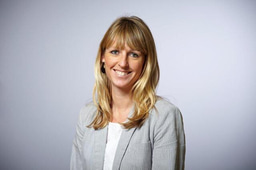SLB Capturi: Learnings from Delivering a Modular, Industrial-Scale Carbon Capture Plant for the Energy-from-Waste Industry

Carbon capture, utilization, and storage (CCUS) is gaining prominence as a critical enabler of decarbonization across various industrial sectors. Within the energy-from-waste industry, integration of CCUS technologies addresses the dual challenge of managing residual waste while significantly reducing associated CO2 emissions.
Twence carbon capture and utilization project
In January 2025, SLB Capturi handed over its first Just Catch™ 100 modular carbon capture plant to Twence, designed to capture 100,000 tonnes of CO2 annually. The captured CO2 will predominantly support local greenhouses in the horticultural sector, promoting circularity and reducing reliance on conventional CO2 production methods.
Modular design and deployment
The plant uses the SLB Capturi Advanced Carbon Capture™ process and is based on the standardized, modular Just Catch plant design, which is known for its compact layout. The system includes three process modules, one electrical and instrumentation module for local control, absorber and desorber columns, and a compression and liquefaction system.
The modules and associated external piping and structures were prefabricated off-site in a controlled workshop environment. The plant’s columns were transported by ship, barge, and truck (for the final mile). Thanks to the modular design, the equipment was received and installed in an optimized time frame, with minimized on-site fabrication. The extensive prefabrication process enhanced quality and significantly reduced risks associated with health, safety and environment, as well as delays due to weather-related events.
After delivery, the carbon capture plant underwent rigorous testing and validation, demonstrating its effectiveness under real-world, full-scale conditions. Handover of the plant ready for use marks a significant milestone in the deployment of modular carbon capture plants.
With more plants becoming operational, live performance data is being monitored and analyzed by the SLB Capturi global support hub, enabling ongoing optimization of Twence’s operations and providing valuable insights to derisk future projects.
.jpg)
Lessons learned from the Twence project
The lessons learned from this project provide invaluable insights for future initiatives and a road map to refine practices and enhance project outcomes. These lessons reflect SLB Capturi’s commitment to continuous improvement and its drive to deliver impactful, efficient, and scalable carbon capture solutions for the energy-from-waste industry.
- Fostering a partnership approach with customers
Adopting a collaborative mindset from project inception fosters trust and enables effective problem-solving during execution. Strong working relationships with customers and third parties facilitated transparent communication and swift resolution of challenges, ensuring project success. This partnership approach will remain a priority in future endeavors.
- Continuous improvement in product development
Seamless integration of fabrication and engineering processes is paramount. The Twence project highlighted the importance of iterative product development to ensure modular components meet stringent engineering requirements. Ensuring that engineering design is sufficiently mature before fabrication begins is critical for efficiency.
- Enhancing the Just Catch plant toolbox
Optimization and continuous development of the Just Catch plant design method and associated tools is essential for improving execution efficiency. Alignment and proper roll-out of methods and tools will drive consistency and continuous improvement in future projects. Insights from Twence will guide enhancements to modular designs and execution protocols.
- Minimizing site fabrication
Prefabricating components off site and minimizing onsite fabrication reduced project complexity and risks. This strategy enhanced efficiency and safety during the installation phase, while also lowering overall costs. Minimizing onsite work will continue to be a focus area in future projects.
- Strengthening partnerships with suppliers
Collaborations with suppliers must be built on aligned values and mutual trust. Establishing strong relationships ensures that suppliers deliver high-quality components adhering to both regional standards and local requirements. Rigorous prequalification and selection of suppliers will further mitigate risks and ensure project success.
- Addressing regional and local standards
Balancing regional standards with specific local requirements is a recurring challenge. Early alignment with regulatory frameworks and local stakeholders proved vital to achieving compliance without compromising the project’s timeline. Leveraging local knowledge can enhance integration and ensure smooth project execution.
Role of CCUS in the energy-from-waste Industry
Energy-from-waste plants play a critical role in society by managing residual waste and generating stable baseload energy. However, the associated CO2 emissions—both biogenic and from fossil fuels—must be addressed to align with global decarbonization goals. Integrating CCUS into energy-from-waste facilities provides dual benefits:
- CO2 emissions reduction and avoidance: Capturing fossil-fuel-derived CO2 mitigates its release into the atmosphere.
- Carbon dioxide removal (CDR): Capturing and permanently storing biogenic CO2 generates negative emissions, supporting net-zero targets and offering high-integrity carbon credits in voluntary carbon markets.
The Twence project exemplifies how modular carbon capture solutions can unlock decarbonization opportunities in the energy-from-waste sector, aligning with the EU’s waste hierarchy and global climate neutrality ambitions.
Conclusion
Successful delivery of the SLB Capturi Just Catch plant for Twence underscores the transformative potential of modular carbon capture technology. By leveraging lessons learned—from ensuring engineering maturity to fostering strong partnerships—future projects can achieve even greater efficiency and impact. Integrating CCUS within energy-from-waste facilities not only enhances waste management strategies but also plays a crucial role in global decarbonization efforts.
SLB Capturi is the joint venture between SLB and Aker Carbon Capture, dedicated to carbon removal and reduction solutions. The company’s proven modular technologies enable industries to deploy capture technology at speed and scale, meeting the requirements of tomorrow and the opportunities of today. The company is currently delivering eight carbon capture plants to bioenergy, waste to energy, and cement facilities. Find out more at capturi.slb.com.
Learn more about SLB Capturi’s Just Catch plant offerings: Just Catch™ | SLB Capturi
Read the news release about the handover of SLB Capturi’s Just Catch plant to Twence: SLB Capturi powers up its first modular carbon capture plant | SLB Capturi.
SLB Capturi is an official sponsor for the 2025 Energy from Waste Conference, taking place in London on 5-6 March. Find an exclusive EfW Network discount code here!





Please sign in or register for FREE
If you are a registered user on Energy from Waste Network, please sign in